Make the best use of Scientific Research and information from our 700+ peer reviewed, Open Access Journals that operates with the help of 50,000+ Editorial Board Members and esteemed reviewers and 1000+ Scientific associations in Medical, Clinical, Pharmaceutical, Engineering, Technology and Management Fields.
Meet Inspiring Speakers and Experts at our 3000+ Global Conferenceseries Events with over 600+ Conferences, 1200+ Symposiums and 1200+ Workshops on Medical, Pharma, Engineering, Science, Technology and Business
Case Report Open Access
Fixed Apparatus Medication of a Skeletal Class II Open Chomp Malocclusion with Hypomature Amelogenesis Blemished: Case Report
| Halimi A1*, El alloussi M2, Sefiani A3and Zaoui F1 | |
| 1University Mohammed V-Souissi (UM5S), Faculty of Dentistry,BiotechResearch Team. MMB, IbnSinaHospital, Centre for DentalConsultationand Treatment, Department of Orthodontics and dentofacial Orthopedics, Israel | |
| 2University Mohammed V-Souissi (UM5S), Faculty of Dentistry Rabat Ibn Sina Hospital, Centre for Dental Consultation and Treatment, Department of Pediatric dentistry, Israel | |
| 3University Mohammed V-Souissi (UM5S), genomic center of humain science, Department of medical genetic, Israel | |
| Corresponding Author : | Abdelali Halimi Specialist qualified in orthodontics University Mohammed V-Souissi (UM5S) Rabat Faculty of Dentistry, Research Team of Biotech. MMB Ibn Sina Hospital, Department of Orthodontics and Dentofacial Orthopedics, Rabat City, Morocco Tel: +212666285639, 0021237790844 E-mail: halimiali111@yahoo.fr |
| Received April 09, 2013; Accepted May 03, 2013; Published May 05, 2013 | |
| Citation: Halimi A, El alloussi M, Sefiani A, Zaoui F (2013) Fixed Apparatus Medication of a Skeletal Class II Open Chomp Malocclusion with Hypomature Amelogenesis Blemished: Case Report. J Nov Physiother 3:137. doi: 10.4172/2165-7025.1000137 | |
| Copyright: © 2013 Halimi A, et al. This is an open-access article distributed under the terms of the Creative Commons Attribution License, which permits unrestricted use, distribution, and reproduction in any medium, provided the original author and source are credited. | |
Visit for more related articles at Journal of Novel Physiotherapies
Abstract
This article depicts the orthodontic medicine of a 12-year-old female tolerant having askeletal Class II malocclusion with localised hypomature amelogenesisimperfecta. We were fit to fulfil orthodontic medication without causingdental polish harm for example demineralization, white spot sore and breaks when were moved the edgewise apparatuses. A great impediment and feel grins were realized, and these comes about have been administered for three years after fruition of the animated medication.
| Keywords |
| Altered apparatus medicine; Class II open chomp malocclusion; Hypomature amelogenesis imperfecta |
| Introduction |
| In an instance of extreme skeletal Class II malocclusion with long challenge, we frequently have trouble regulating the posterior movement of the molars throughout orthopaedic medication. Since the patient had an extraordinary mellow localised manifestation of hypomature amelogenesis imperfecta, we established to build sufficient plaque control and treated the patient by a straight holding strategy. |
| Amelogenesis imperfecta (AI) has been portrayed as a mind boggling assembly of inherited conditions that exasperates the improving polish structure and exists free of any identified systemic disorder [1-4]. This lacquer abnormality influences both the essential and changeless dentition [1-5]. The occurrence of amelogenesis imperfecta has been accounted for to differ between give or take 1:700 and 1:16,000, relying on the populace considered and the analytic criteria used [5-8]. |
| The most acknowledged characterization framework recognizes three fundamental AI sorts dependent upon the anticipated developmental system: hypoplastic (HPAI)-secretory deformity; hypocalcified (HCAI)-crystallite nucleation and development imperfection; and hypomaturation (HMAI)-protein transforming and crystallite development deformity. Further divisions are dependent upon mode of inheritance [9,10]. |
| HPAI comes about because of deformities in the secretory technique making slender or hollowed veneer that could be typical or adjusted in structure or alternately creation. Hypoplastic AI is connected with various allelic transformations in the AMELX (OMIM 606585) and ENAM (OMIM 300391) genes and presumable will indicate heterogeneity past the aforementioned genes [11-18]. |
| The aetiology of HCAI is accepted to be a powerlessness of the crystallites to fittingly nucleate initiating anomalous and a stamped diminishing in mineral substance. The sub-atomic surrender for HCAI remains obscure. Nonetheless, in a few expansive families, the most ordinarily recognized AI petitioner genes have been prohibited through linkage investigation showing up ‘til now unidentified genes are connected with this AI type [19]. |
| HMAI is brought about by strange of the lattice proteins throughout development coming about because of either irregular of veneer mutant framework proteins (e.g. AMELX changes) or anomalous (e.g. KLK4 transformations) [12,20,21]. The expanded protein maintenance in HMAI avoids the ordinary advancement and development of the finish gems and brings about a diminished polish mineral substance. Change in the kallikrein 4 gene (KLK4) that transforms a finish serine proteinase basic for veneer development has been distinguished in one family having autosomal passive pigmented HMAI [21]. |
| A Swedish investigation of 66 individuals with AI discovered skeletal open nibble qualities in families with X-connected AI, autosomal latent summed up flimsy HPAI and AI subtypes described by hypomineralization (i.e. HCAI and HMAI) [22]. |
| The pervasiveness of open nibble malocclusions in individuals with lacquer deserts diagnosed as AI is more excellent than in the all inclusive community. In any case, the commonness of open nibble in AI relatives without polish absconds is additionally more stupendous than the general population [22]. While it is plausible that the hereditary changes answerable for AI finish imperfections either incline a single person to or creates an open nibble, it moreover is conceivable that the AI cohorted veneer absconds and open nibbles are brought on by distinctive hereditary systems. |
| Cartwright et al. [23] Assessed open chomp attributes in AI relatives that did not express veneer deserts as controls to separate if the open nibble phenotype was a familial quality free of AI [22]. In some AI kindred’s, the skeletal open nibble happened in relatives with and without veneer deserts proposing that, in anyhow some AI families, the aforementioned two phenotypic attributes could be disconnected. All things considered, the aforementioned clinical studies propose an in number yet as yet poorly demarcated acquaintanceship between the presence of AI veneer imperfections and open nibble malocclusions. Understanding this companionship is clinically significant as numerous intense AI open chomps need surgical-orthodontic correction [23,24]. |
| The pathophysiology prompting an affiliation between dental or alternately skeletal open nibble malocclusion and AI remains unclear [22,25-28]. |
| Case Presentation |
| The patient was a 10-year-old Marocain female with an intense skeletal Class II open nibble malocclusion, tongue brokenness. The head dissention was the maxillary bulge and gathering. In her family history, her father had amelogenesis imperfecta. |
| The patient had a raised profile, with abundance vertical stature of the easier front side (Figure 1). Intraorally she had an Angle Class II molar of 7 mm relationship in the right side, Angle Class II molar of 6 mm relationship in the left agree with, a minimal overbite of-1 mm (between 14 and 24) and an over jet of +7 mm. The premolars and molars were positioned in crossbite. The bend of Spee was-3 mm and gathering-6 mm was available in the mandibular curve. The mandibular midline moved to the left by 2 mm to the facial one. Dental curve width of maxillary and mandibular showed disharmony. The hypomature amelogenesis imperfecta localised at the upper incisors (Figure 2). |
| The surrounding radiographs demonstrated blended dentition, presence of the 65 and germs of all third molars (Figures 3- 8). |
| Cephalometric dissection indicated a skeletal Class II association with an ANB plot of 8°. The measure of the mandible was minor and it was ordinary. |
References |
|
Figures at a glance
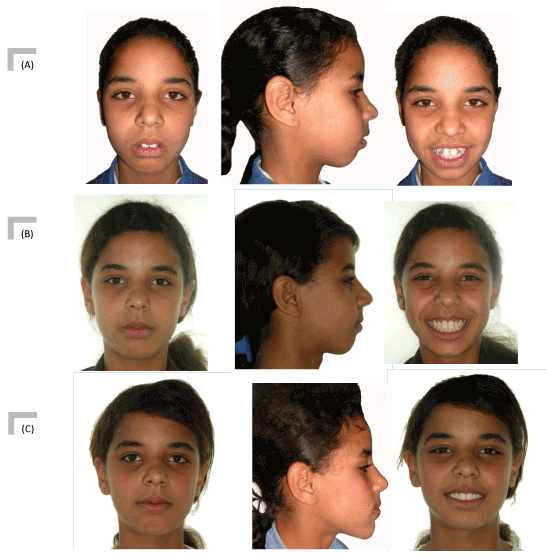 |
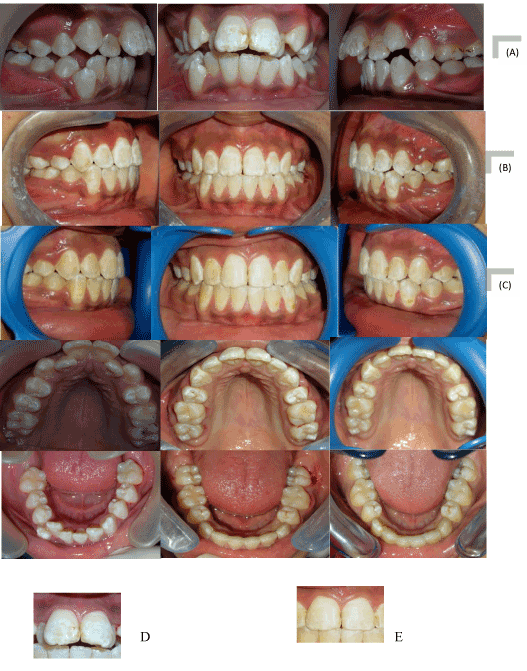 |
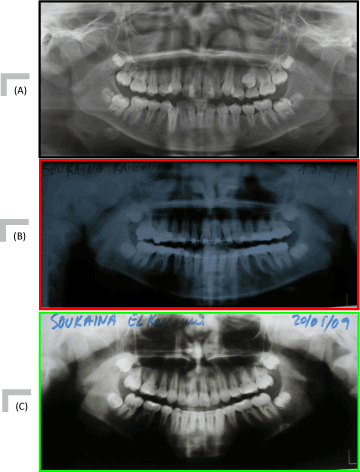 |
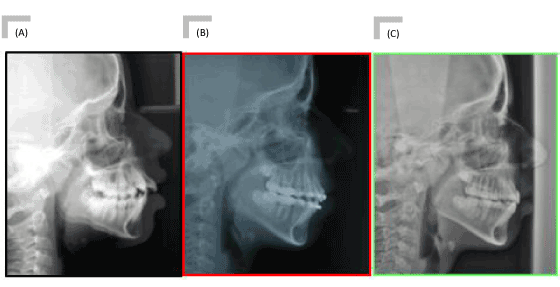 |
| Figure 1 | Figure 2 | Figure 3 | Figure 4 |
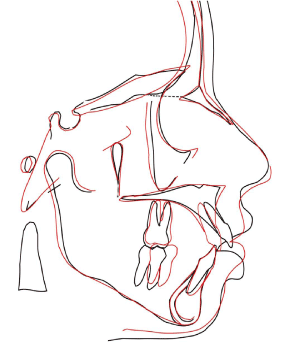 |
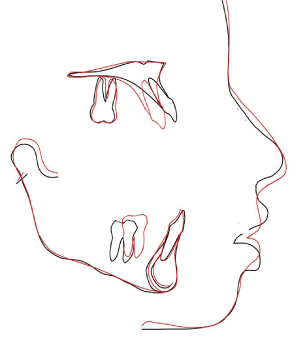 |
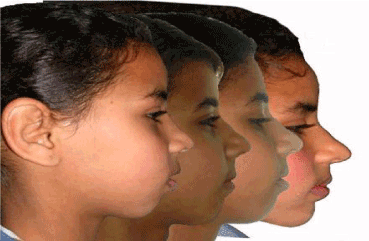 |
 |
| Figure 5 | Figure 6 | Figure 7 | Figure 8 |
Post your comment
Relevant Topics
- Electrical stimulation
- High Intensity Exercise
- Muscle Movements
- Musculoskeletal Physical Therapy
- Musculoskeletal Physiotherapy
- Neurophysiotherapy
- Neuroplasticity
- Neuropsychiatric drugs
- Physical Activity
- Physical Fitness
- Physical Medicine
- Physical Therapy
- Precision Rehabilitation
- Scapular Mobilization
- Sleep Disorders
- Sports and Physical Activity
- Sports Physical Therapy
Recommended Journals
Article Tools
Article Usage
- Total views: 13522
- [From(publication date):
April-2013 - Apr 02, 2025] - Breakdown by view type
- HTML page views : 8960
- PDF downloads : 4562
